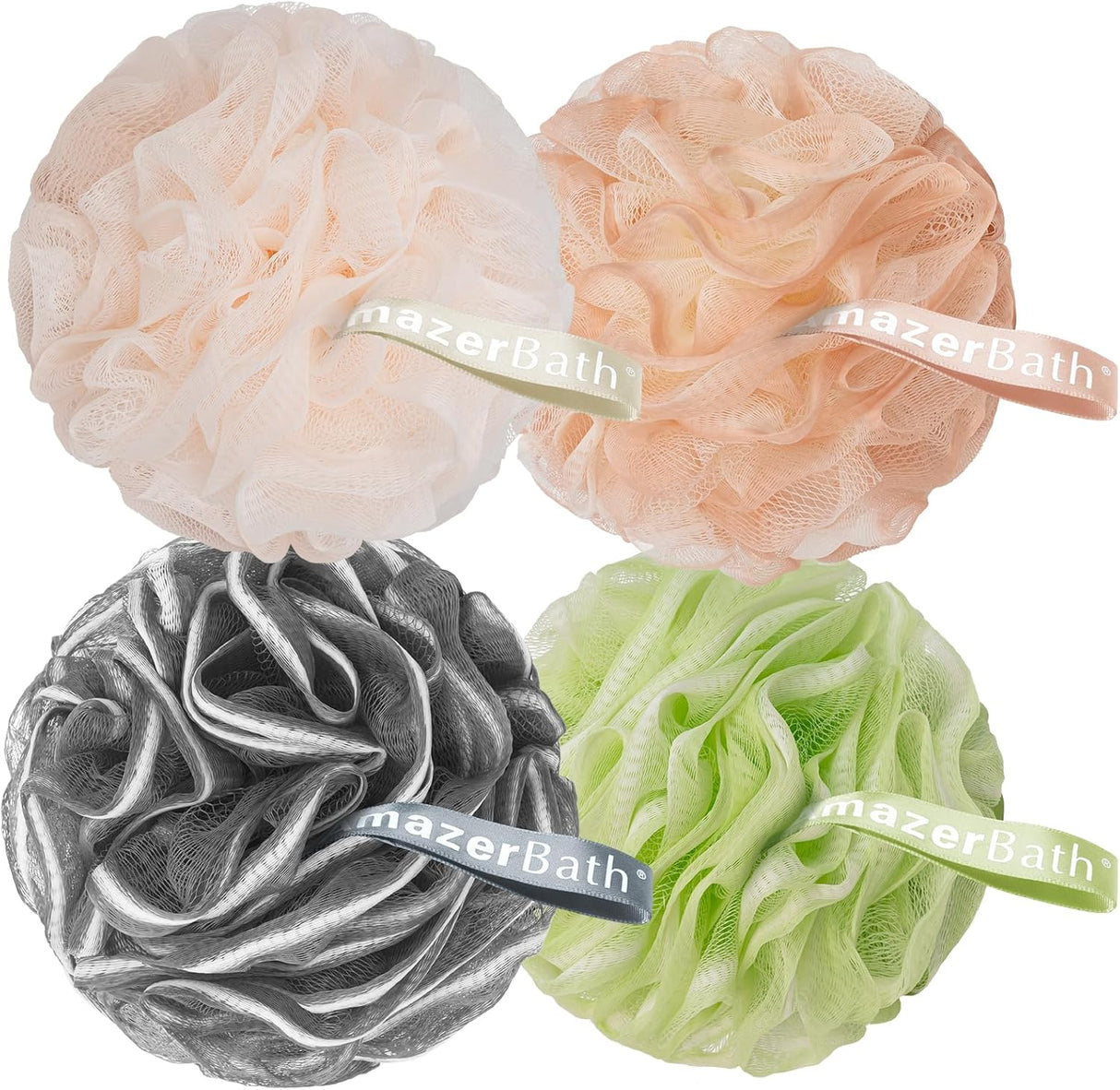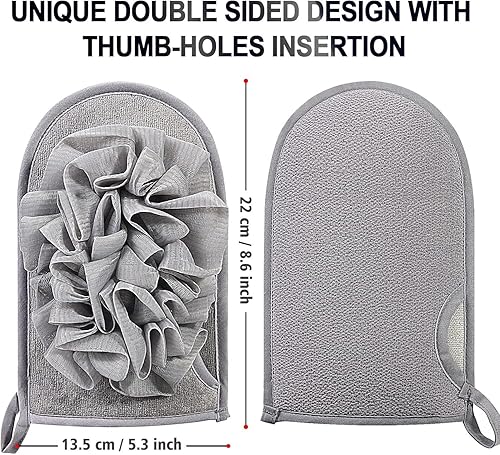Your favorite bathroom pouf just fell apart, and now you’re staring at a tangled mess wondering how to fix it. It’s frustrating when something simple like a pouf stops working, but don’t worry—you can bring it back to life quickly.
Imagine saving money, avoiding waste, and having your pouf looking and feeling like new again. Keep reading, and you’ll discover easy steps that anyone can follow to put your bathroom pouf back together. You’ll be surprised how simple it really is!
Tools And Materials Needed
Gathering the right tools and materials is the first step to successfully putting your bathroom pouf back together. Having everything on hand saves you time and frustration. Let’s look at what you might already have around the house and what special tools could make the repair easier and more durable.
Common Household Items
You might be surprised at how many useful items are already in your home for fixing a bathroom pouf. Simple things like a pair of scissors can help trim loose threads or cut replacement string. Sewing needles and thread, especially strong polyester thread, are essential for re-stitching torn mesh or seams.
Other handy household items include:
- Rubber bands:These can temporarily hold pieces together while you work.
- Safety pins:Useful for threading elastic or string through the pouf.
- Clear tape:Can help patch minor holes before sewing.
Ask yourself: What simple tools do you already have that could speed up this repair? Often, the most basic items do the trick.
Specialized Repair Tools
If you want a stronger, longer-lasting fix, specialized tools can make a big difference. A small pair of pliers or tweezers helps pull thick thread or elastic through tight mesh loops without damaging the material.
Here are some tools worth considering:
- Mesh repair needle:Designed to work with delicate netting without causing tears.
- Elastic cord or replacement string:Ideal for tightening the pouf’s structure.
- Fabric glue:Adds extra hold to seams and patches.
Do you want your pouf repair to hold up against daily use? Investing in a couple of these tools can make your work easier and the results more reliable.
Assessing The Damage
When you notice your bathroom pouf unraveling or looking worse for wear, it’s crucial to assess the damage before deciding on a fix. This initial step helps you understand whether a simple repair will suffice or if a replacement is necessary. A careful examination of the pouf can save you time and effort, ensuring that you’re not wasting resources on a lost cause.
Identifying Loose Or Torn Sections
Start by examining your pouf for any loose or torn sections. Gently pull on different parts to see where the mesh might be coming apart. Look for frayed edges or knots that have come undone. Consider the size and location of the damage. Is it a minor tear that can be easily tied back together, or is it a larger section that compromises the structural integrity of the pouf? In my own experience, a small tear near the center often spells trouble, while edge frays are usually quick fixes. What do you see in your pouf?
Determining Repair Feasibility
Once you’ve identified the problem areas, it’s time to decide if a repair is feasible. Assess the extent of the damage and ask yourself if it can be mended with some simple sewing or knotting. If the mesh is too worn out or the tears are too extensive, it might not hold up even after a repair. In such cases, replacing the pouf could be a more cost-effective and time-saving option. Remember, a well-maintained pouf not only looks better but also improves your bathing experience. Does your pouf deserve a second chance, or is it time to let go?
Basic Reassembly Steps
Reassembling a bathroom pouf is simple with the right steps. This process helps restore the pouf’s shape and usability quickly. Focus on smoothing and layering the mesh properly. These basic steps bring your pouf back to life.
Untangling And Flattening The Mesh
Start by gently pulling apart the tangled mesh layers. Take care not to tear the delicate material. Lay the mesh flat on a clean surface. Smooth out wrinkles and clumps with your hands. This step prepares the pouf for easy layering.
Aligning The Layers
Stack the mesh layers evenly, one on top of another. Make sure the edges line up neatly. Check for any twisted or folded parts. Adjust the mesh until it looks uniform and balanced. Proper alignment helps the pouf regain its puffiness and shape.

Credit: www.aliexpress.com
Simple Stitching Techniques
Simple stitching techniques help fix a bathroom pouf quickly. They keep the pouf intact and ready for use. These methods do not need special tools or skills. Anyone can sew the pouf back together with some patience and care.
Using Needle And Thread
Choose a needle that fits through the pouf’s fabric easily. Pick a strong thread to hold the material firmly. Thread the needle and tie a small knot at the end. Start sewing from the inside to hide the stitches. Use small, even stitches to join the torn edges. Pull the thread gently to avoid puckering the fabric. Continue stitching until the entire tear is closed. Finish by tying a secure knot and trimming extra thread.
Knotting For Durability
Knotting the thread well is key to a long-lasting repair. Begin with a double knot at the start of sewing. After closing the tear, tie at least two knots to lock the thread. Make sure knots are tight but not too tight to tear the fabric. Hide knots inside the pouf to keep the look neat. This prevents the pouf from falling apart during use. Proper knotting saves time and effort in future repairs.
Using Glue For Quick Fixes
Using glue for quick fixes is a practical way to restore your bathroom pouf without needing to replace it entirely. It saves time and money, especially when you spot a small tear or a loose section. But choosing the right glue and applying it carefully can make all the difference between a lasting repair and a sticky mess.
Choosing The Right Adhesive
Not all glues work well on the synthetic mesh of a bathroom pouf. You want an adhesive that bonds fabric firmly but stays flexible after drying. Look for waterproof fabric glue or a strong craft adhesive designed for nylon or polyester materials.
Super glue might seem like a quick solution, but it can become brittle and cause the pouf to break again. Hot glue is another option, but it may melt the mesh if applied too hot. Have you ever tried a glue that didn’t hold up after a few uses? Picking the right type can prevent that disappointment.
Applying Glue Safely
Before gluing, make sure the pouf is dry and clean. Any soap residue or moisture can weaken the bond. Apply the glue sparingly to avoid stiff spots and let it dry completely before using the pouf again.
Work in a well-ventilated area to avoid inhaling fumes. Protect your fingers by using a toothpick or a small brush for precise application. Have you noticed how a little extra care during application can extend the life of your repair?

Credit: amazerbath.com
Reinforcing The Pouf
Reinforcing your bathroom pouf extends its life and keeps it fluffy. Strengthening the mesh prevents tearing and helps the pouf hold its shape. Small fixes can make a big difference in daily use. Focus on adding support layers and securing the edges for better durability.
Adding Extra Mesh Layers
Use soft mesh fabric similar to your pouf’s material. Cut pieces slightly larger than the damaged area. Layer the mesh inside the pouf to cover weak spots. This adds thickness and stops further ripping.
- Choose breathable mesh to keep the pouf light.
- Overlap edges for better hold.
- Use gentle hand stitching or fabric glue.
Reinforcing inside layers spreads pressure evenly. Your pouf will feel fuller and last longer.
Securing With Rubber Bands Or Clips
Rubber bands or small clips help keep mesh layers tight. Wrap bands around the pouf’s center or edges. Clips hold layers together firmly without damage.
- Pick soft rubber bands that won’t snap easily.
- Use plastic clips to avoid rust or stains.
- Check bands and clips regularly for wear.
This simple step stops mesh from loosening. It keeps the pouf firm and comfy during use.
Maintaining Your Pouf
Maintaining your bathroom pouf helps it last longer and stay fresh. Proper care keeps the mesh soft and prevents damage. Simple habits protect the pouf from wear and tear.
Regular Cleaning Tips
Rinse the pouf after each use to remove soap and dirt. Squeeze out excess water gently. Hang it in a well-ventilated area to dry quickly. Avoid leaving it in damp places to stop mold growth.
Wash the pouf weekly in warm water with mild soap. Use your hands to clean it softly. Rinse thoroughly to remove all soap. Let it dry completely before using it again.
Preventing Future Damage
Do not use harsh chemicals or bleach on the pouf. These can weaken the mesh and cause tears. Avoid rough scrubbing or twisting the pouf to keep its shape. Replace the pouf every few months for hygiene and quality.
Store the pouf in a dry place when not in use. Keep it away from sharp objects that can puncture the mesh. Regularly check for small holes or loose strings and fix them early.

Credit: www.walmart.com
Frequently Asked Questions
How Do I Fix A Torn Bathroom Pouf?
To fix a torn bathroom pouf, carefully sew the tear using a needle and strong thread. Match the thread color to the pouf. Use small, tight stitches to secure the mesh. Avoid pulling too tight to prevent further damage.
Can I Use Glue To Repair A Bathroom Pouf?
Using glue is not recommended for repairing bathroom poufs. Glue often weakens the mesh and loses stickiness when wet. Sewing provides a stronger, longer-lasting fix. For minor repairs, hand stitching is the best option to maintain durability.
How Do I Prevent My Bathroom Pouf From Falling Apart?
To prevent your pouf from falling apart, rinse it thoroughly after each use. Squeeze out excess water and hang it to dry. Avoid harsh chemicals and replace it every 2-3 months to maintain hygiene and durability.
What Materials Do I Need To Repair A Bathroom Pouf?
You need a needle, strong nylon or polyester thread, and scissors to repair a bathroom pouf. Choose thread that matches the pouf color. Optionally, use a thimble to protect your finger while sewing.
Conclusion
Putting a bathroom pouf back together takes just a few simple steps. Keep the layers even and tight for best results. Make sure to secure the loop or string firmly. This helps the pouf keep its shape longer. Regular care will make your pouf last and stay clean.
Try fixing it yourself before buying a new one. It saves money and reduces waste. Small fixes like this keep your bathroom neat and fresh. Easy to do, and worth the effort.





